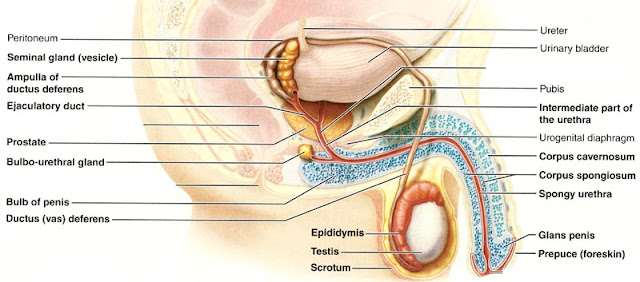We are doing some more histology. I hope those of you that do not understand the more technical details enjoy the pictures I've taken.
Today's Medical Topic: Histology of The Adrenal Gland
What Are We Looking For: The capsule that encloses the adrenal gland, the three major zones of the adrenal cortex, and the adrenal medulla.
The Tissue Sample: Alrighty. Let's take a look.
 |
| Adrenal Section at 100x. (Click for big.) |
So here is the whole section we are looking at. For reference the bottom is the capsule and it goes up through all three layers of the adrenal cortex with the very top of this image being part of the adrenal medulla.
 |
| All the layers. (click for big) |
Here I have cut the image in half and identified the areas we are interested in. From bottom to top:
The Capsule: The adrenal glands are enclosed in a capsule of fibrous connective tissue. This is turn is enclosed with a fatty cushion for protection. This fatty cushion has been mostly dissected away for this slide and is not identified.
The next three sections compose the adrenal cortex:
Zona Glomerulosa: The thinnest and most difficult to identify part of the adrenal cortex. Only 5 to 6 cell layers thick this section looks indistinct and blurry. I have magnified this section below. This cells of this layer produce mineralcorticoids.
Zona Fasciculata: The middle layer of the adrenal cortex and the thickest. Microscopically it looks like cords of cells arranged linearly. The cells in this layer produce metabolic hormones called glucocorticoids.
Zona Reticularis: The inner most layer of the adrenal cortex. Microscopically it is identifiable as a change from cords of lined up cells to a almost gravel-like appearance. The boarder between this layer and the zona fasciculata are very indistinct but the change in overall appearance is unmistakable. This layer produces adrenal sex hormones called gonadocorticoids.
Now the inner most section of the adrenal gland.
The Adrenal Medulla: In the above image you can see about half of the adrenal medulla. You can see it is quite a large section and also very different from any of the other areas. The adrenal medulla synthesizes epinephrine and norepinephrine and acts as part of the sympathetic nervous system.
Because it is difficult to see the fibrous capsules and the zona glomerulosa in the above images here is a close up:
 |
| (click for big) |
I have outlined part of the zona glomerulosa in red to highlight how it is sort of squares of cells. You can also see the capsule and how the capsule becomes denser as it approaches the adrenal cortex. I hope this helps those of you studying the endocrine system. If you have any questions or comments then drop me a line at dudaday@gmail.com.
Disclaimer: I am not a health care provider, any information presented in this blog should not be considered advice it is mearly an outlet to slake my curiosity. You should always consult your primary medical provider for any concerns or illness. Unlike Tylenol, I am not approved by the FDA or American Medical Association to treat or provide relief for any ailment.




















































